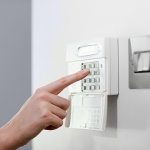How Prepared is Your Family for an Emergency?

Although you can’t have your family completely prepared for every emergency that may come your way there are a few steps you can take to ease the stress of many situations.
The Government of Canada recommends having Emergency Kits, as well as Emergency Plans prepared and ready for use. These kits can be fairly basic, but will have you prepared in case you need to go without power or tap water. They recommend being self-sufficient for at least 72 hours.
We recommend keeping your kit in something that is easy to carry such as a backpack, duffle bag, or suitcase with wheels. Keep it in an accessible place and make sure everyone in the household knows where it is. If you have a larger family it may be a good idea for each person to have their own bag prepared so each can personalize their kit with what they need.
In a Basic Kit they recommend:
Easy to carry: As mentioned above it is important to pack your emergency kit so that you and those on your emergency plan can easily take the items with you, if necessary
Water: Two litres of water per person per day (Include small bottles that can be carried easily in case of an evacuation order)
Food: Pack non-perishable items such as canned food, energy bars and dried foods (remember to replace the food and water once a year or watch the expiry dates)
Manual can opener: You’re going to want to be able to eat the food listed above.
Flashlight and batteries
Battery-powered or wind-up radio: Not only for entertainment but for informational purposes. To keep boredom at bay you may also want to include some colouring books, crayons and some books of puzzles to keep everyone busy.
Extra batteries
First aid kit
Special needs items: Only you will know those specific items your family will need. These could include prescription medications, infant formula or equipment for people with disabilities
Extra keys for your car and house
Cash: Include smaller bills, such as $10 bills (travellers cheques are also useful) and change for payphones
Emergency plan: Include a copy of it and ensure it contains in-town and out-of-town contact information
The above kit will get you through 72 hours but it is recommended to have some additional items on hand to help you get through even the worst emergencies.
Additional Emergency Supplies:
Two additional litres of water per person per day: For cooking and cleaning
Candles and matches or lighter: Place in sturdy containers and do not burn unattended
Change of clothing and footwear: For each household member
Sleeping bag or warm blanket: For each household member
Toiletries
Hand sanitizer
Toilet paper
Utensils
Garbage bags
Household chlorine bleach or water purifying tablets
Basic tools: Hammer, pliers, wrench, screwdrivers, work gloves, pocket knife
Small fuel-operated stove and fuel
Whistle: To attract attention
DON’T FORGET YOUR PETS!
Above when we say household members – we mean them too! (Maybe not for the sleeping bag or clothes…we’ll leave that up to your discretion).
Items to include in an emergency kit for your pet(s) include:
A seven-day supply of food and water
Identification tag and collar
Sturdy crate and/or carrier
Pet first aid kit
Blanket/plastic bags
Leash, harness
Food and water bowls (collapsible are great)
Litter box and litter for cats
Manual can opener: You may or may not want to share yours.
Copy of your pet’s current vaccination history
Any special medications and instructions
When an emergency situation arises you are stressed and things you will need are often forgotten. Not to mention when you are ordered to evacuate you need to do so as soon as possible. You may not have time to gather everything you need and get out of the house right away.
Hopefully nothing will ever happen and you will never need these kits, but if you ever do you certainty won’t regret taking to time to put them together. If you would rather purchase a basic kit and personalize it The Canadian Red Cross as well as some other retailers sell kits to help get you started.
Also, if you must evacuate your home due to an evacuation order, call your broker or insurer. Mass evacuation is covered by many policies for living expenses such as your accommodations, fuel, meals and transportation costs. Keep all of your receipts to assist with your claim. These expenses may be subject to your deductible.


